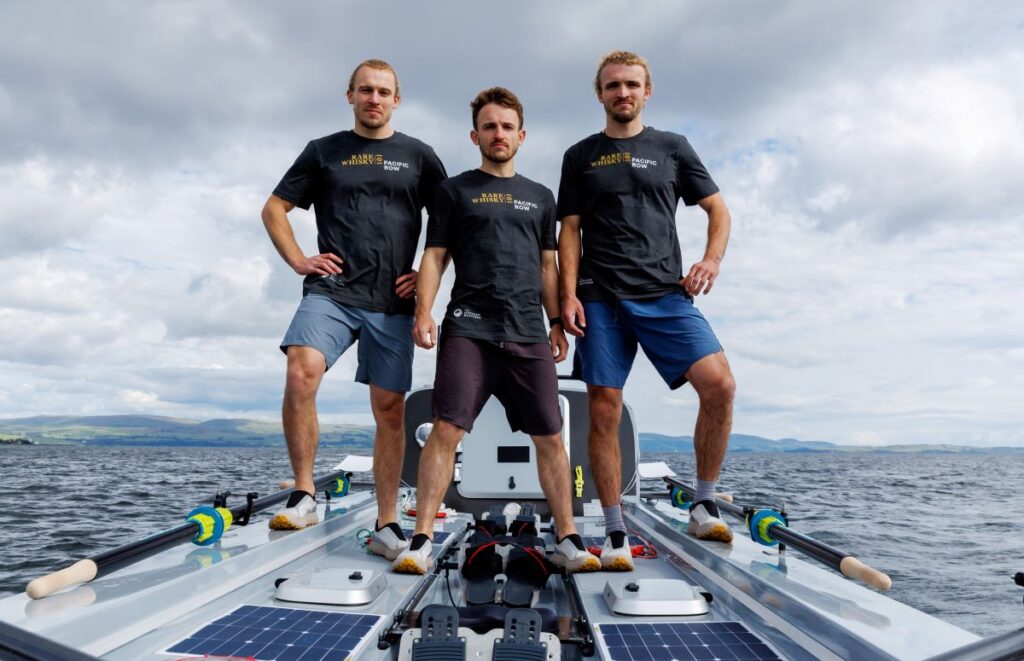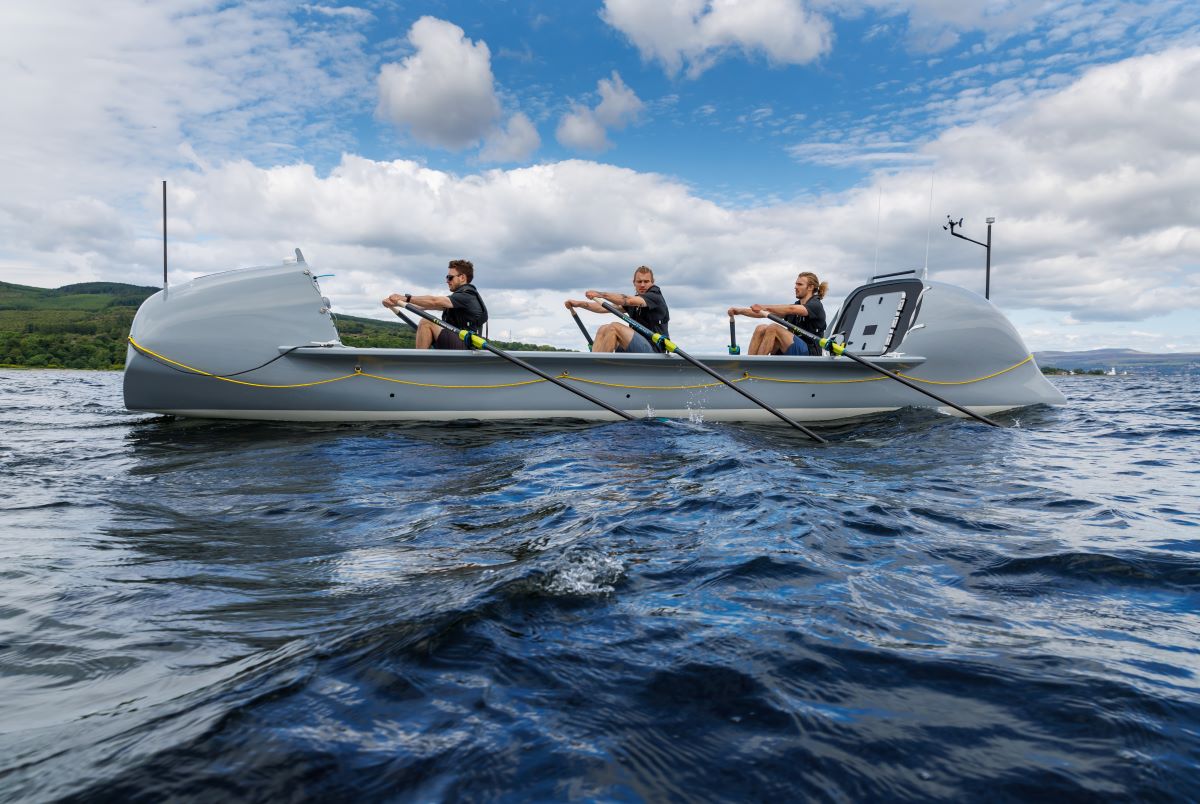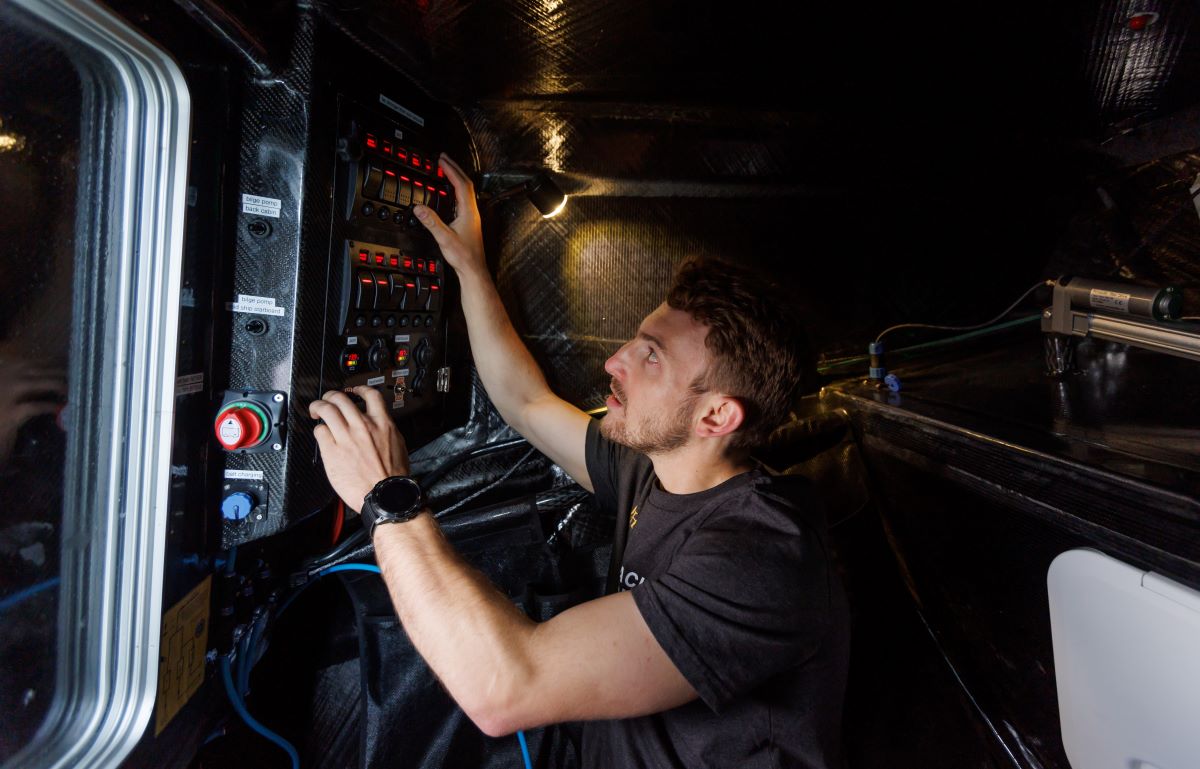
Sharks and 30ft waves: The deadly risks facing three Scots on a 14,000km Pacific row
For most people, shark-infested waters, mammoth waves, and fish that can pierce a boat’s hull would be the stuff of nightmares.
But for Jamie, Ewan, and Lachlan Maclean, the sons of whisky expert Charles Maclean, these dangers will be part of daily life as they take on a 14,000km, non-stop, unsupported row across the Pacific Ocean.
The Rare Whisky 101 Pacific Row, launching from Lima, Peru, to Sydney, Australia, in April this year, aims to set a new record for the fastest human-powered crossing of the Pacific – a journey through some of the most dangerous waters on Earth.
‘We’re putting our lives at risk,’ said youngest brother Lachlan.
‘We’ll be susceptible to sharks, storms, and everything in between. There’s no safety net, no quick rescue, no easy way out.
‘One of the biggest dangers is that we’ll need to get out of the boat regularly to remove marine growth from the hull.
‘But every time we do, we’ll be stepping into waters where sharks roam. The last thing we want is a curious shark mistaking us for prey, or investigating the boat too closely.’
Eldest brother Ewan, an engineer, has been researching shark deterrent technology to reduce the risk of an encounter.

‘Surfers use electromagnetic bands that create an invisible barrier in the water, so we’re testing whether that could work at sea,’ he said.
‘Another option is tracking technology, so we can get alerts when large sharks are in the area.
‘If we know what’s below us, we can take precautions before getting in the water.
‘We’re experimenting with a way to clean the hull from the deck, basically a toothbrush on a rope.
‘If it works, it could save unnecessary trips into the ocean, potentially saving us from coming face to face with one of Jaws’ pals.’
While sharks may be the most well-known predators, middle brother Jamie believes marlins, a fish capable of slicing through a boat’s hull like a spear, are the biggest threat.
‘They’re massive, and they’re fast. Oh, and they’ve got a weapon built into their heads,’ he said.
‘If a marlin decides to charge us, its spear-like bill could puncture the hull – or it could impale one of us.
‘There have been cases where marlin have wrecked equipment, smashed holes in boats, and have been reported to have killed fishermen at sea.
‘We’ve taken extra precautions, lining our sleeping cabins with a secondary layer of carbon fibre.
‘If a marlin strikes while one of us is inside, that extra layer could save one of our lives. It will help us sleep a little easier.’
The Pacific is home to some of the largest waves on the planet. In a 30-foot swell, their boat could flip in an instant.

To prepare, the brothers have been putting themselves through brutal training in the frigid waters of the Minch, a strait in North-west Scotland, simulating capsize scenarios in extreme conditions.
‘Capsizing is inevitable,’ Lachlan said. ‘There’s no support boat following us, no quick rescue if things go wrong. If we flip, we’re on our own.
‘If we’re not strapped in, we could be thrown across the deck, and we could lose essential gear.
‘The real danger is panic. That’s why we’re training for it now.
‘We’ve been flipping the boat over, trapping ourselves in the cabins, and feeling first hand what it’s like to be inside whilst she rolls over, so that when it happens for real, we don’t think, we just react. We know exactly what to do, step by step.
‘If we capsize, we have to right the boat ourselves. If we run out of food, we have to ration. If something breaks, we have to fix it.
‘It’s complete self-reliance, and that’s what makes it all so dangerous – but we’re doing this for something bigger than ourselves.’
The Rare Whisky 101 Pacific Row, which aims to raise £1 million for The Maclean Foundation for clean water in developing countries, begins in April.
Read more Whisky news here.
Subscribe to read the latest issue of Scottish Field.
TAGS

